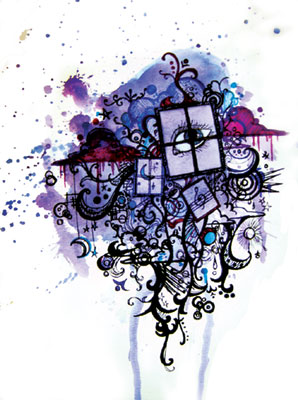All Nonfiction
- Bullying
- Books
- Academic
- Author Interviews
- Celebrity interviews
- College Articles
- College Essays
- Educator of the Year
- Heroes
- Interviews
- Memoir
- Personal Experience
- Sports
- Travel & Culture
All Opinions
- Bullying
- Current Events / Politics
- Discrimination
- Drugs / Alcohol / Smoking
- Entertainment / Celebrities
- Environment
- Love / Relationships
- Movies / Music / TV
- Pop Culture / Trends
- School / College
- Social Issues / Civics
- Spirituality / Religion
- Sports / Hobbies
All Hot Topics
- Bullying
- Community Service
- Environment
- Health
- Letters to the Editor
- Pride & Prejudice
- What Matters
- Back
Summer Guide
- Program Links
- Program Reviews
- Back
College Guide
- College Links
- College Reviews
- College Essays
- College Articles
- Back
The Pursuit of Creativity
It was 9:32 pm on a Thursday night. I was sitting in front of my desk with my head buried in my hands. My eyes were bloodshot with frustration, and my brain felt completely exhausted. The paper in front of me was blank, in contrast with the dozens of completely filled ones lying at the bottom of my trashcan. I was trying to come up with a pin design for tomorrow, the pin contest submission deadline. The directions were deceptively simple: design a pin that will be able to represent our school for the upcoming year. It had sounded like such an easy assignment when my teacher described it.
However, when I began to brainstorm ideas for the pin, I realized that it actually wasn’t that easy. How would I be able to come up with something creative and eye-catching that that no one else had ever thought of before? It felt like an unattainable task. I scrolled through pin design winners from previous years online to seek out some inspiration. The results promptly made me lose hope of any possibility of winning the contest. The designs were tremendously innovative, with striking symbols and objects that playfully captured the nature of the school. The words on the pins were placed tastefully, with some that intertwined cleverly with the drawings and others that utilized fun fonts to stand out. Every single pin design was, put simply, brilliant. And even I could discern that the sole factor that separated each and every one of them from other, more mediocre designs that were tossed into the “ordinary” pile by the judges was creativity.
Creativity is defined by the ability to go beyond traditional, existing ideas in order to create meaningful new ideas. Creativity is also imagination, originality, and innovation. It comes in many forms, from music and art to inventions and philosophical theories. What separates it from other types of skills is that it cannot be taught or forced, only carefully cultivated. There is no foolproof, systematic way to achieve creativity, unlike the study of math or a language. Even if someone follows a creative person’s exact directions, it is very likely that creativity will not be reached. That is what makes it one of the most elusive, highly sought-after but not always obtainable traits.
Sometimes, creativity is not necessarily a form of intelligence, but rather, a product of it. You cannot create something without having a firm foundation of background knowledge within its field first. Beethoven could not have composed any of his sonatas without having a thorough understanding of music, similar to how Pablo Picasso would not have been able to develop a new style of art without being extremely skilled at the drawing and painting of his time. Basically, you must be very familiar with what has already been known in order to establish something new.
Another fact to take note of is that creative people are not necessarily always more intelligent than the people around them. They just happen to observe the world more carefully and think more deeply about what they see. Inspiration can come from anywhere, even the most unexpected places. Some of the most brilliant discoveries and inventions in history were sparked by an ordinary occurrence. The stethoscope was one such creation. Rene Laennec was watching some schoolchildren playing with long, hollow sticks one day. The children held one end of the stick to their ear and scratched the other end of the stick with a pin. The stick was able to transmit as well as amplify the scratching sound. Laennec was inspired by what he saw to create a model of the first stethoscope which would be able to effectively transfer the sounds of a patient’s heartbeat to the doctor’s ear through the device. Laennec’s simple observation was able to serve as the catalyst to one of the most important medical inventions still used today.
Thinking differently is another aspect that many creative people exhibit. Although many kinds of individuals make up our world, there are only a select few that can transcend beyond ordinary ways of considering a subject. Being a visionary and thinking for the future is one perspective that not everyone employs. Instead of asking, “So what?” when faced when the facts, creative people wonder about the possibilities of “what if.” Being curious about everything is effective as well. Blindly accepting the facts instead of always questioning their validity and efficiency does not lead to progress. Thinking “outside of the box” is essential for new things to take form.
Experts say that every single person has creativity inside. And perhaps we all do. But it’s up to us to discover it first.

Similar Articles
JOIN THE DISCUSSION
This article has 0 comments.
